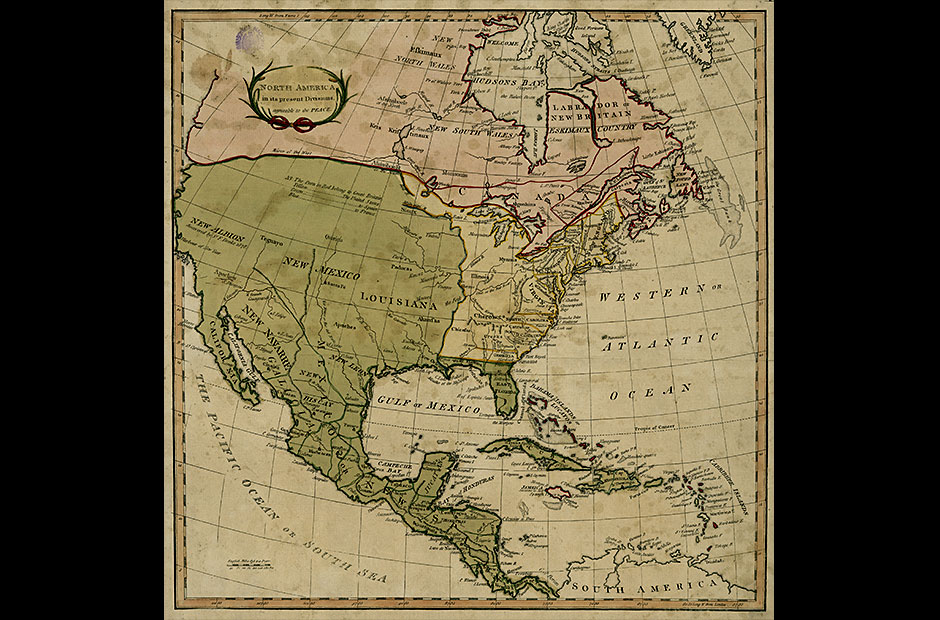The Louisiana Purchase and the Adams-Onís Treaty
Louisiana, ruled by the French since the 17th century, was transferred to Spain in 1762 after the French and Indian War, which had pitted Spain and France together against England. Spanish rule would last until 1801, when the province was secretly returned to France. Between 1801 and 1803, President Jefferson negotiated the purchase of Louisiana from the French Government, led by First Consul Napoleon Bonaparte. The Louisiana Purchase marked the beginning of American expansion towards the West, which went on through the 19th century and eventually reached the Pacific. However, it also became a source of conflict with Spain, since the limits of the acquisition had not been specified. It was only after the Adams-Onís Treaty of 1819 that a border was defined between the Viceroyalty of New Spain and the United States.
The French and Indian war caused the disappearance of France from the North American scene, which was henceforth divided into English and Spanish spheres of influence. Spain, an ally of France, lost Florida in the war but was compensated by receiving French Louisiana: a vast, scarcely explored territory west of the Mississippi.

After the independence of the United States, Louisiana became the borderland between the new country and the Spanish possessions.

It was at this point that Spain, which had recovered Florida and was extending its settlements towards the Pacific Northwest, reached the peak of its presence in North America.

Louisiana was a key piece in the economy of the United States, since the interior of the country depended on the Spanish-controlled Mississippi for trade and communication. In 1795, Spain agreed to open the Mississippi to U.S. trade.

In 1801, Spain secretly returned Louisiana to its French allies. Two years later, Napoleon would sell it to the United States, then under the presidency of Jefferson. With this operation, the country doubled its size in exchange for a paltry sum of money.

The Louisiana Purchase treaty did not actually define the limits of the territory being purchased, and this sparked immediate controversy between Spain and the United States. While the latter claimed an acquisition reaching all the way to the Pacific Ocean, Spain’s position was that it was limited to the banks of the Mississippi. Thus, expeditions such as those of Lewis and Clark (1804-1806) and Zebulon Pike (1806-1807) were considered reconaissance of their own territory by the Americans, and opportunistic incursions beyond their borders by Spain, which sought to prevent them when possible.

The controversy was finally solved by the 1819 Adams-Onís Treaty, which defined a border between the United States and Spain. The signing of the treaty marked a shift in the balance of power in North America. Spain gained recognition of its sovereignty over Texas in exchange for surrendering Florida (de facto already beyond its control) and allowing the United States to extend its borders to the Pacific Ocean north of the 42nd Parallel.


The borders defined in the Adams-Onís treaty did not quite match the areas of actual occupation; although it withdrew certain settled regions from Spain, the treaty also expanded its nominal dominion over areas, such as northern California, that in some cases had not even been explored. After the independence of Mexico in 1821, it was this country that asserted actual Hispanic rule over all the areas within the boundaries of the treaty.



